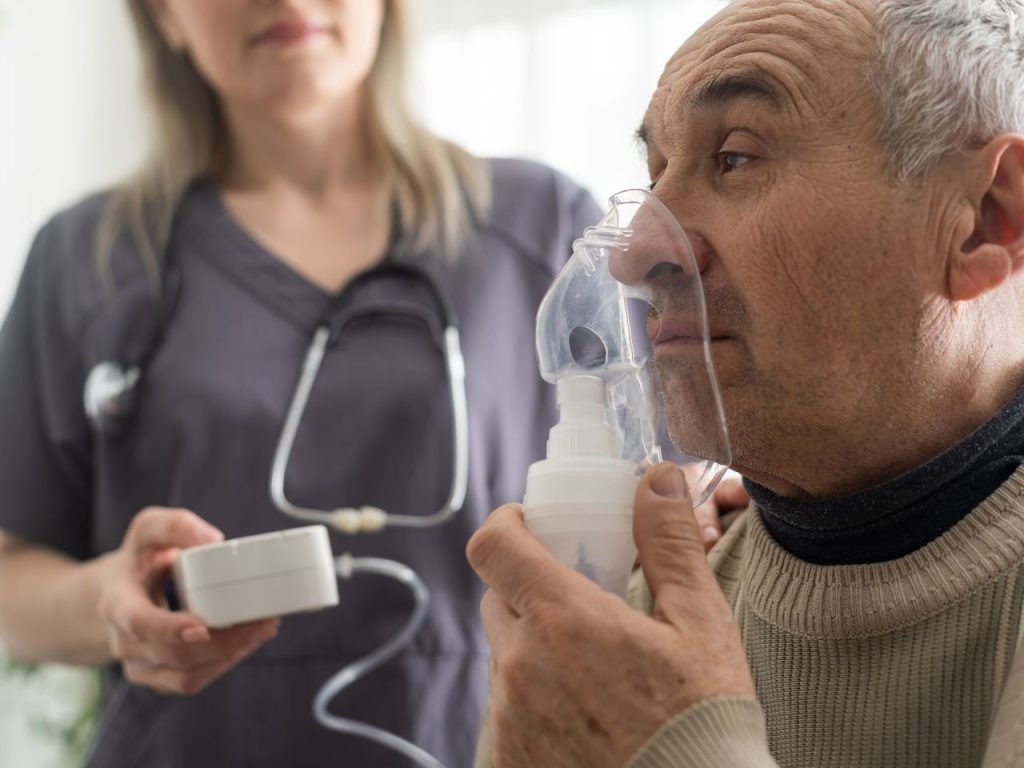
by Lori A Marmon, PT, MBA, COS-C
The OASIS includes many items that seem like they are similar or even duplicative (Think M1830 – Bathing and GG0130 – Shower/bathe self). In those cases, it would seem that if we are able to answer one item, we should know how to answer another OASIS item.
Sadly, there is no easy button. Each OASIS item needs to be considered independently and coded based on the guidance specific for that item.
When looking at a patient’s respiratory status in our OASIS items, we have a couple items to consider. Starting with, M1400 – When is the patient dyspneic or noticeably short of breath which is an item that has been collected for quite a while.
For M1400 providers want to capture with physical assessment, including observation, patient/caregiver interview and review of the health history what level of exertion on the day of assessment (the 24 hours immediately preceding the home visit and the time spent by the clinician in the home) results in dyspnea or shortness of breath. We are looking to determine the amount of effort that causes the patient’s dyspnea. So, this item is not collecting IF our patient is short of breath or dyspneic, but WHEN and with what level of exertion or activity.
With that in mind, we must then take oxygen use into account. For patients that use supplemental oxygen there could be implications on when they would experience shortness of breath and at what level of exertion. Direction is clear for this item that if a patient utilizes supplemental oxygen and that oxygen is utilized continuously (at all times during the day of assessment, with only brief interruptions) then we will determine what level of activity results in shortness of breath or dyspnea, observed or reported on that day of assessment, with the oxygen IN PLACE.
If the patient uses oxygen intermittently, code the response based on the patient’s shortness of breath WITHOUT the use of oxygen. We are going to select our responses based on the patient’s actual use of oxygen in the home, not on the physician’s oxygen order, as we recognize those may not always align.
Now we have captured the level of exertion that causes our patient’s shortness of breath or dyspnea on the day of assessment with or without the use of their continuous or intermittent supplemental oxygen (if applicable) for M1400 so we should be able to answer O0110 – Special Treatments, Procedures, and Programs; Respiratory Therapies with relative ease, right?
First, let’s go back to our earlier statement. Each OASIS item needs to be considered independently and coded based on the guidance specific for that item. At times we can compartmentalize and assess aspects of our patient once (like their respiratory system and care) and then code it twice under OASIS items that are collecting different data elements.
For O0110, we are going to “check” or include all treatments, procedures and programs that are part of the patient’s current care/treatment plan at the time of the assessment, even if not used at the time of the assessment. We are NOT assessing here for shortness of breath or dyspnea but only if the treatment of oxygen therapy is a part of the patient’s current care/treatment plan.
However, we are collecting if the patient is utilizing this oxygen intermittently or continuously and for O0110, this has a very specific definition that varies from M1400. If oxygen therapy is continuously delivered for ≥ 14 hours per day, then we select Oxygen Therapy, Continuous for O0110. If oxygen therapy is delivered intermittently (< 14 hours continuously), then we select Oxygen Therapy, Intermittent for O0110.
For this item we do have direction when selecting the coding that regardless of how the oxygen is ordered (i.e., continuously or intermittently), we are to apply these OASIS specific definitions in determining whether oxygen is coded as continuous (delivered for ≥ 14 hours per day) or intermittent (oxygen was not delivered continuously for at least 14 hours per day).
Similar terminology may be used but by keeping the OASIS specific definitions aligned with their respective items, that is when more accurate coding for these 2 OASIS items is possible.
___
Stay up to date on new CMS information related to HHVBP and OASIS accuracy.
by Megan Bernier, MSPT RAC-CT COS-C Why is item M1100 ...
by Marian Essey, RN, BSN, COS-C Soon after OASIS data ...
by Marian Essey, RN, BSN, COS-C With the October 2024 ...
by Lori Marmon PT, MBA, COS-C Beginning January 1, 2025, ...
by Kerry Termine, DPT, HCS-D, COS-C What are the Quality ...
by Lori Marmon PT, MBA, COS-C Home health providers are ...